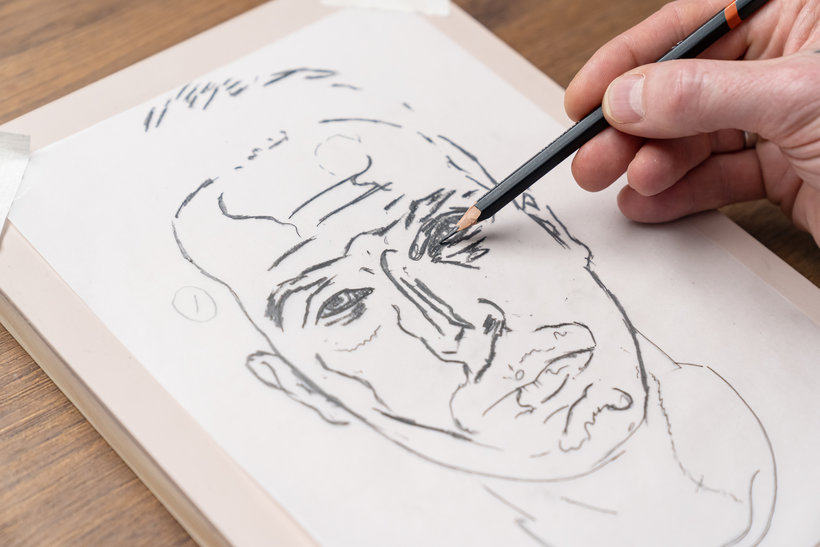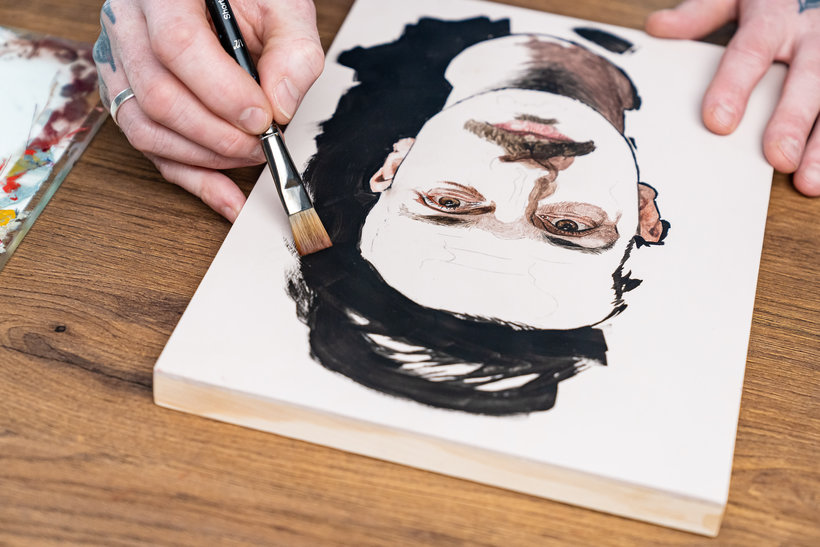Realistic Oil Portraiture: Conveying Detail and Expression
Course final project
A course by Alan Coulson , Portrait Artist
About the final project for: Realistic Oil Portraiture: Conveying Detail and Expression
Realistic Oil Portraiture: Conveying Detail and Expression
“We have reached the end of this course! I really hope that you have enjoyed this creative journey and insight into my personal creative approach. We have learned a little about myself, my influences, and most importantly, the human connection that drives me to pursue a career making portraits in oil paint. I want you to finish this journey by submitting an oil portrait of your making. Of course, I am not only interested in the outcome (which I will appreciate and I am so eager to see), I also want to see what your journey has been to create such a portrait. Throughout the course, I have taught my method and approach to oil painting, and I would love for you to use my teachings as a reference. The imitation game is not what I seek by showing you my process, take what is useful and disregard what does not suit you. That is what using references and inspiration is all about. Having said that, I would like to highlight the key elements of my creative process: Initial considerations The important considerations I take into account when choosing and photographing a subject for my work, whether that is an emotional connection to that person, a shared personal interest, or an aesthetic fascination. The importance of making your subject feel comfortable whilst photographing them to achieve a natural look. The use of window light as a light source for your photo and how to choose a reference that is dynamic but also has an emotional impact. Through pencil sketches, we have explored the features of the face. These preparatory drawings give us confidence and a sense of familiarity when making our painting.






Partial transcription of the video
“So we've come to the end of our course, and I wanted to take some time to recap the lessons that we've covered, some of the new skills that we've learned along the way. First, we took a look at some of the essential tools that you'll need to make an oil portrait, and in particular, the tools that I use when I'm making a portrait in oil. Then we looked at how I approach choosing a subject for my portrait and how this for me is quite a personal thing. and considering how you might decide to choose who it is you want to paint and why you want to paint them. We looked at how to make your model ...”
This transcript is automatically generated, so it may contain mistakes.
Course summary for: Realistic Oil Portraiture: Conveying Detail and Expression
-
Category
Illustration -
Areas
Fine Arts, Oil Painting, Painting

Alan Coulson
A course by Alan Coulson
Alan Coulson is an award-winning portrait artist from England with over fifteen years of experience using oil paints. He began a Fine Arts degree, however, after struggling to articulate his creative ideas, he dropped out and began working in fashion retail.
It was the birth of his first son in 2005 that prompted him to reconnect with his artistic ideas and explore oil painting. Shortly after deciding to pursue his dream of becoming a portrait artist, Alan Coulson was awarded a BP Portrait Award from The National Portrait Gallery in London. The exposure and awards he has received have given rise to a successful career in portraiture with clients including The New York Times, The Sunday Times Magazine, Bloomberg Markets Magazine, Carlton Books, The Chronicle Review, Club Wembley, and more.
- 99% positive reviews (556)
- 13,855 students
- 19 lessons (3h 26m)
- 11 additional resources (1 files)
- Online and at your own pace
- Available on the app
- Audio: English, Spanish (Latam), French, Italian, Portuguese, Turkish
- Spanish · English · Portuguese · German · French · Italian · Polish · Dutch · Turkish
- Level: Beginner
- Unlimited access forever
Category
Areas




